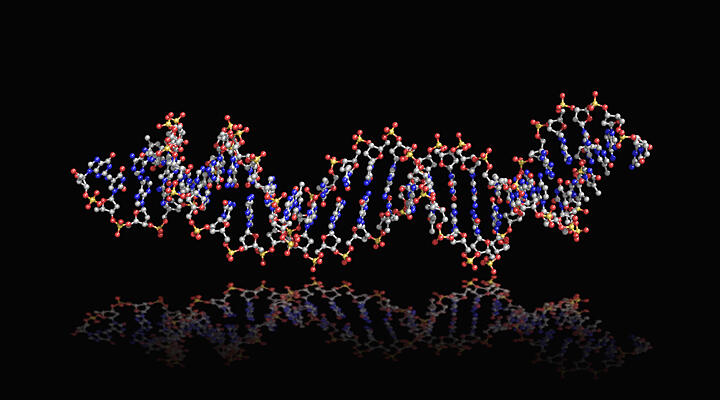A joint research group led by Professor Hirohisa Ohmiya and Assistant Professor Kazunori Nagao, both of the Institute for Chemical Research and Graduate Student Kenji Ota of the Graduate School of Pharmaceutical Sciences at Kyoto University, together with Dr. Yusuke Sasaki and Dr. Dai Hata of Takeda Pharmaceutical Company Limited, and Associate Professor Yasutomo Segawa of the Institute for Molecular Science has succeeded in realizing the tertiary alkylation of phosphorus atoms in nucleic acids, a reaction that has been difficult to achieve to date, and synthesized new chemically modified oligonucleotides. This is expected to lead to the creation of new nucleic acid drugs. The results have been published in Nature Communications.

Nucleic acid drugs are attracting attention as a new therapeutic approach because of their ability to recognize RNA as a target molecule and their high specificity. These types of drugs are typically oligonucleotides consisting of tens to several dozen nucleotides and can therefore be produced by chemical synthesis. In other words, chemical modification of the nucleobases, sugar ring skeletons, and phosphodiester groups that make up nucleotides will lead to the creation of new nucleic acid drugs. For example, chemical modification of the phosphodiester group affects the stability of the drug against nucleolytic enzymes and hence its pharmacokinetic profiles. However, the alkyl groups that can be introduced into the phosphorus atoms in nucleic acids are limited to those that are not too bulky, such as methyl groups and primary or secondary alkyl groups, and this has caused drug stability problems.
The research group found that under blue LED irradiation, the use of organosulfur compounds and tertiary aliphatic carboxylic acid derivatives promoted the tertiary alkylation of phosphorus atoms in phosphites bearing two 2′-deoxynucleoside structures and a leaving group.
The desired compound could not be obtained at all with the cyanoethyl group, a common leaving group used in oligonucleotide synthesis. The speculated reason for this is that in the intermediate formed from the reaction between the phosphorus atom in the nucleic acid and the carbocation equivalent, the deoxynucleoside structure is released instead of the conventional cyanoethyl group. Therefore, by designing a leaving group with high elimination ability, the desired tertiary alkylphosphonate oligonucleotide was successfully obtained.
This technique can be used to construct a wide variety of tertiary alkylphosphonate oligonucleotides because the reaction conditions are mild, providing high functional group tolerance, and the aliphatic carboxylic acid raw materials are readily available.
Specifically, the four types of pyrimidine and purine bases that constitute DNA could be used. It was also possible to achieve tertiary alkylation of the phosphorus atoms of phosphites bearing not only the same deoxynucleoside structure but also asymmetric deoxynucleoside structures composed of different nucleobases. In fact, 15 new chemically modified nucleic acids with bulky tertiary alkyl groups have been successfully synthesized. The resulting nucleic acid derivatives were derivatized to phosphoramidites and used in a solid-phase synthesis method to synthesize oligonucleotides consisting of 10 deoxynucleotides.
Five oligonucleotides with tertiary alkylphosphonate backbone structures introduced at the terminus or within the nucleotides have been successfully synthesized. No degradation of the tertiary alkylphosphonate backbone structures was observed under the reaction conditions of derivatization or oligonucleotide synthesis, indicating the robustness of this structure.
Ota commented, "By utilizing carbocations generated under mild conditions, we have succeeded in synthesizing bulky tertiary alkylphosphonate deoxynucleotides that are difficult to produce through conventional methods. The key point was to understand the problem by analyzing the by-products and to design a leaving group with high elimination ability. We expect that the chemical structures established with this method will be used in actual nucleic acid drugs as new charge-neutral chemically modified oligonucleotides."
This article has been translated by JST with permission from The Science News Ltd. (https://sci-news.co.jp/). Unauthorized reproduction of the article and photographs is prohibited.




